HTC Thunderbolt Review: The First Verizon 4G LTE Smartphone
by Brian Klug on April 27, 2011 12:12 AM EST- Posted in
- Smartphones
- HTC
- Verizon
- LTE
- 4G
- Android
- HTC Thunderbolt
- Mobile
- MDM9600
- MSM8655
The rear of the Thunderbolt is divided in two. The top battery cover area is coated with HTC’s favorite black soft touch material, and down below is a beefy kickstand that seems at least twice as wide as the EVO’s. Underneath the kickstand is the Thunderbolt’s speakerphone grille.
Further down is a small rubber plug dead center in the back of the phone. If you can manage to wry it loose, underneath is what looks like a test port for the CDMA RF path rather than an external antenna connector. It’s difficult to get out, and even more difficult to get back in straight.
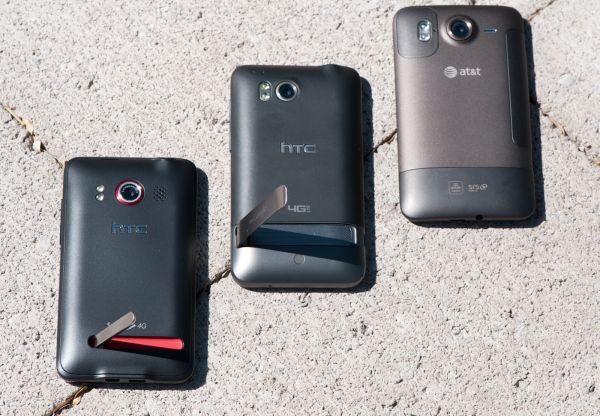 Kickstands (Left to Right): HTC EVO, HTC Thunderbolt, HTC Inspire
Kickstands (Left to Right): HTC EVO, HTC Thunderbolt, HTC Inspire
The kickstand seems to be something HTC always does on its absolute latest and greatest, and clearly alludes to HTC’s other 4G first with WiMAX. The EVO and Thunderbolt both have kickstands, though I have to admit that I like the Thunderbolt’s better. It works in landscape and portrait, though landscape is clearly the intended orientation. It’s bigger and beefier, and feels more secure in both orientations than the EVO’s does as a result.
My only complaint is that there’s some sort of coating material on the kickstand metal which has begun chipping off, making a weird discolored pattern right where the kickstand contacts the surface it rests on. Likewise, on the rear where it is coplanar with surfaces, it has begun chipping off. I’m not abusive with my own devices (nor review units), it’s just seriously peeling off.
The design language of the Thunderbolt is clearly inspired by the HTC Desire HD (and its AT&T variant, the Inspire 4G, which I picked up for personal use). Side by side, it’s obvious that these two share a ton of industrial design notes.
The recessed chrome earpiece grille with notification LED below, button schema, and edge curvature radius is all the same. I can see how the recessed notification LED could be a huge pain. Green is a bit hard to see, orange for charging seems much easier. To me this looks about the same between the Desire HD and Thunderbolt.
Where the two differ most notably is construction. The Desire HD is primarily metal of the same sort the Nexus One came clad in, HTC’s favorite purple/grey material. Unlike its cousin, the Thunderbolt is almost entirely plastic, though the rough matte polish of the device cleverly disguises this concession. HTC is clearly marching in the direction of unibody metal phones, as evidenced by the Sensation/Pyramid.
So why plastic for the Thunderbolt? The reason might be RF, as the Deisre HD leverages the battery compartment door’s RF window to hide a WiFi antenna, and the SIM card slot at the bottom for cellular (as does the Sensation). The Thunderbolt can’t make any such concession, being literally stuffed full of antennas. Likewise, perhaps sheer size also necessitated plastic to keep mass reasonable. Either way, the Thunderbolt scuffs and deforms like plastic if you drop it, I’ve had it in my pocket long enough that I’ve dropped it twice already, creating such scuffs.
Button placement and responsiveness are totally fine. The power button is up at top and protrudes enough for easy location with the index finger when held in either hand. On the other side is the headset jack, and next to it is a noise cancellation microphone.
On the far right is the volume rocker which is adequately clicky. Subjectively, the Thunderbolt’s volume buttons seem far easier to manipulate than the Desire HD’s, whose buttons blend into the battery cover door and are far too smushy. (As an aside, HTC supposely knows about this problem and is redesigning the battery door and offering replacement doors if you’re an Inspire/Desire HD owner.)
The Thunderbolt’s microUSB port is on the bottom left of the device. The only thing on the far bottom of the phone is the microphone port.
Overall construction of the Thunderbolt is good, though I still think the Desire HD’s real metal unibody design is far more rugged. HTC industrial design seems to be headed squarely in the metal-unibody route if designs like the Sensation and others like the Desire S or Incredible 2 say anything. I’m definitely excited about those, going forward.
| Physical Comparison | ||||||
| Apple iPhone 4 | LG Optimus 2X | HTC EVO 4G | HTC Thunderbolt | |||
| Height | 115.2 mm (4.5") | 123.9 mm (4.87") | 121.9 mm (4.8") | 122 mm (4.8") | ||
| Width | 58.6 mm (2.31") | 63.2 mm (2.48") | 66.0 mm (2.6") | 67 mm (2.63") | ||
| Depth | 9.3 mm ( 0.37") | 10.9 mm (0.43") | 12.7 mm (0.5") | 13.2 mm (0.52") | ||
| Weight | 137 g (4.8 oz) | 139.0 grams (4.90 oz) | 170 g (6.0 oz) | 183.3 g (6.46 oz) | ||
| CPU | Apple A4 @ ~800MHz | NVIDIA Tegra 2 Dual-Core Cortex-A9 (AP20H) @ 1 GHz | 1 GHz QSD8650 65 nm Snapdragon | 1 GHz MSM8655 45 nm Snapdragon | ||
| GPU | PowerVR SGX 535 | ULP GeForce | Adreno 200 | Adreno 205 | ||
| RAM | 512MB LPDDR1 (?) | 512 MB LPDDR2 | 512 MB LPDDR1 | 768 MB LPDDR2 | ||
| NAND | 16GB or 32GB integrated | 8 GB integrated, up to 32 microSD | 1 GB integrated, 8 GB microSD preinstalled | 4 GB NAND with 32 GB microSD Class 4 preinstalled | ||
| Camera | 5MP with LED Flash + Front Facing Camera | 8 MP with autofocus, LED flash, 1080p24 video recording, 1.3 MP front facing | 8MP with dual LED Flash and 1 MP Front Facing camera | 8 MP with autofocus and dual LED flash, 720p30 video recording, 1.3 MP front facing | ||
| Screen | 3.5" 640 x 960 LED backlit LCD | 4” 800 x 480 IPS | 4.3” 800 x 480 LCD-TFT | 4.3” 800 x 480 LCD-TFT | ||
| Battery | Integrated 5.254Whr | Removable 5.6 Whr | Removable 5.5 Whr | Removable 5.18 Whr | ||
The Thunderbolt's packaging is a bit of a departure from the rest of the Verizon 4G LTE box artwork. It's a striking black affair with embossed Verizon and HTC lettering. The inside is blood red Verizon color. Inside is the phone with microSD card preinstalled, USB cable, charger, and manuals.
I've also put together a rather long video review of the HTC Thunderbolt with a demonstration of practically everything, though I'll link to pertinent parts throughout this review.


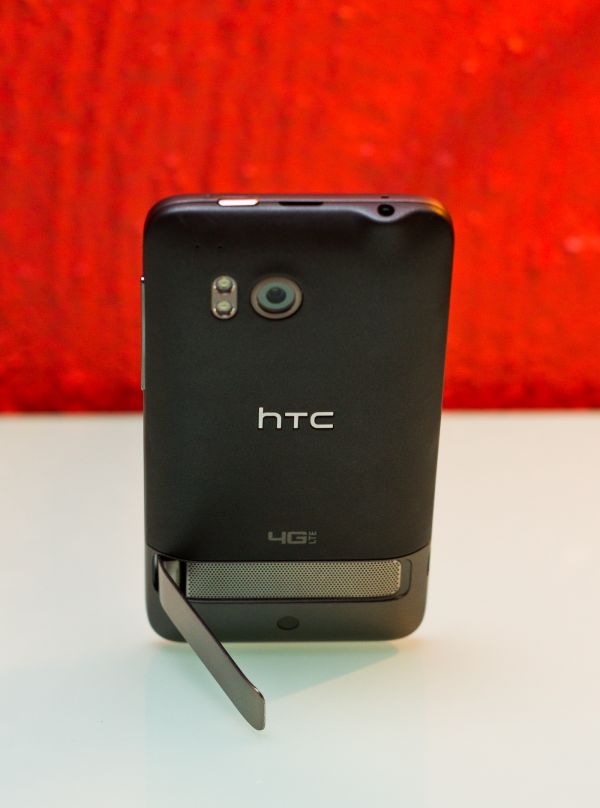
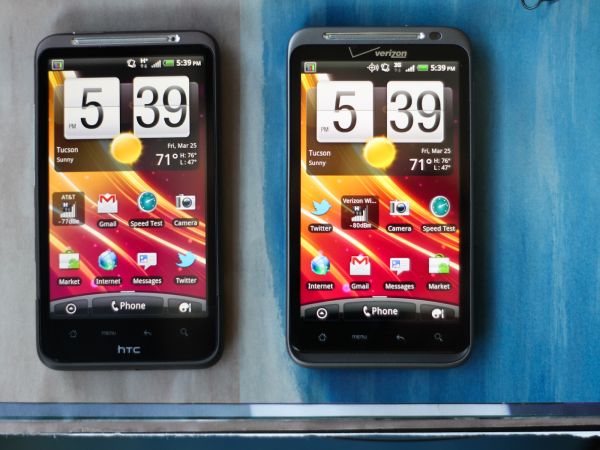
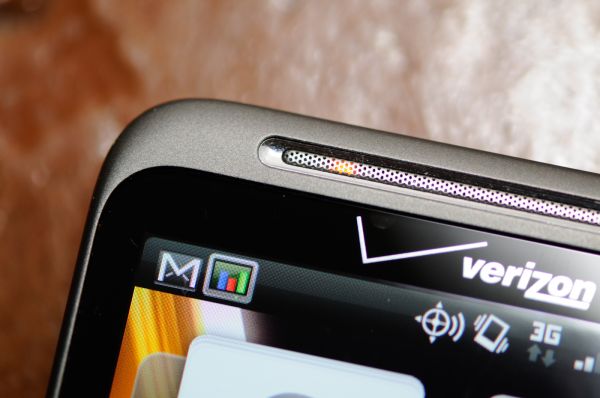

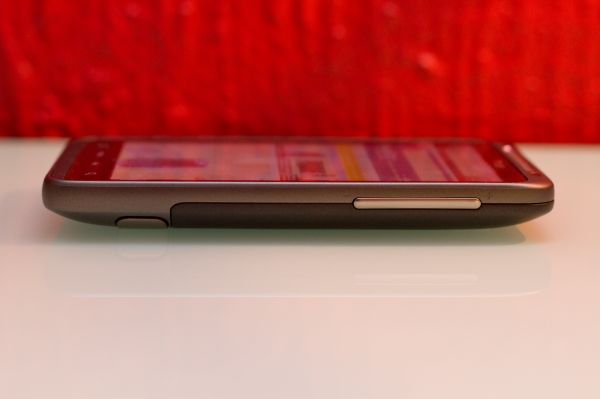
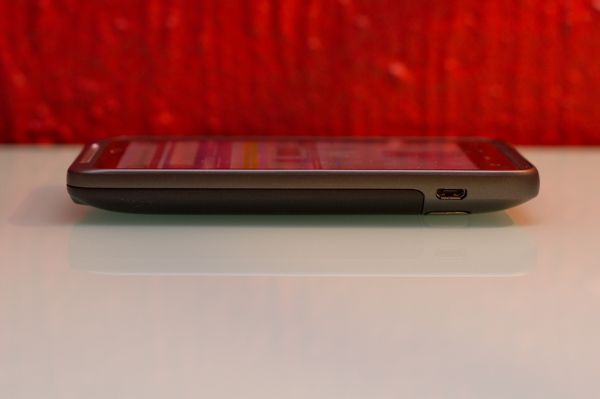
















71 Comments
View All Comments
HangFire - Wednesday, April 27, 2011 - link
I credit this to Angry Birds. The bigger the tablet, the better the experience.MilwaukeeMike - Wednesday, April 27, 2011 - link
Well... it comes with a kickstand, clearly they want us to watch movies on them, which means they're not going to get any smaller. Have you ever had one though? It's not that bad. I have a double sized battery on my EVO and the extra width actually makes it easier to take out of my pocket (The ridge by the kickstand makes a little 'handle') and easier to hold sideways.MilwaukeeMike - Wednesday, April 27, 2011 - link
Oh... and a thicker phone means it's more likely in contact with your leg (guys) if in your pocket and increases the chance that you'll feel it when on vibrate.HangFire - Wednesday, April 27, 2011 - link
Brian, great in-depth review.The original Tbolt specs had 8GB of NAND Flash, but mine only reads 4. I've heard a rumor the that half was locked out to help deal with the battery issue, and another rumor that it might be "unlocked" some day. Do you have any info?
Also, some mention should be made of the awful Blockbuster app that comes pre-installed, with permissions to spy on everything, running processes that constantly use data, and cannot be uninstalled short of rooting. HTC and Verizon should be made to understand that such shovelware/crapware is totally unacceptable.
I found the 5MP T-Mobile G2 camera much better indoors/low-light than my Tbolt. Alas, T-Mobile has poor data in my area so I moved over to Verizon and the Tbolt. I think the pointless increase in Megapixels is the cause. I'd like to see better pictures, not better specs.
Brian Klug - Wednesday, April 27, 2011 - link
Interesting, I went with the HTC specifications which list 8 GB, but see what you mean about 4 GB now on this Thunderbolt. Very curious. I don't think the reason could be battery usage since it's nonvolatile, though I've heard lots of discussion about devices with 1 GB+ of RAM using more battery. I'll ask some questions and find out.The funny part about the crapware on the Thunderbolt is that it's actually far less than I see on the Inspire 4G. I haven't seen the Blockbuster app be persistent (though that could be because I haven't launched it), but otherwise yes you're completely right about the preload situation.
-Brian
sooper_anandtech12 - Wednesday, April 27, 2011 - link
Nice to see that the 3.7" 854x480 display on the Droid and Droid 2 still rockin' it as one of THE best displays in the mobile space. As for the push towards qHD displays. To be honest, I would like Motorola and the rest of them to hold off on these qHD displays. They all employ PenTile pixel substructures which effectively means there are less pixels than advertised. Looking at an Atrix display compared to my Droid's display and it's clear the Atrix should have been called Atrocious. The pixelation around widgets and on wallpapers was unacceptable. I haven't seen pixelation like that since AMOLED. Why release qHD PenTile LCDs when Samsung recently admitted PenTile stinks and is going with a normal RGB set up with S-AMOLED+? I'd rather see a nice IPS display like in the LG G2X, running at the antiquated 800x480 than a qHD display running 30% less pixels than the 960x540 that's advertised.mlosee222 - Wednesday, April 27, 2011 - link
Confirmed by threads at xda developers and other sources:http://www.engadget.com/2011/04/27/verizons-lte-ne...
Maybe its just the verizon commercials, but what has me sold is the network. I could honestly care less about the phone compared to the speeds LTE offers. Voice is a secondary consideration to data throughput for me. I would buy the thunderbolt for the network alone.
With that being said, I sincerely hope verizon's LTE isn't as overloaded and useless as T-Mobile's "3G" network is.
hans007 - Wednesday, April 27, 2011 - link
i agree. as someone who just left t-mobile for verizon, their network is terrible now at least for data. their voice isn't really spectacular either.in the bay area, their 3G coverage was really spotty.
and i am also in los angeles a lot and t-mobile has a ton of dead zones. i can't believe they advertise it as 4G as it felt slower than 3G on verizon.
Brian Klug - Wednesday, April 27, 2011 - link
It's a bitter irony really, of course the day after I post everything, eHRPD goes down and takes 4G LTE and 3G EVDO (on eHRPD) with it.If you go into EPST (##778#) and enter MSL (000000), you can change the modem setting under Rev.A to use just HRPD instead of eHRPD. That way, you're anchored through the old 3G data network instead of the common anchor point for EVDO and LTE that appears to be having problems right now.
I've been having sporadic EVDO (eHRPD) connectivity all day with dips to 1x. Unfortunate, but things like this will gradually get better in time.
-Brian
synaesthetic - Thursday, April 28, 2011 - link
Really depends on where you live, and plus you also get what you pay for. T-Mobile is considerably cheaper than Verizon.For slightly less service (assuming I do not buy an LTE device), Verizon charges me $30 more than T-Mobile does. From $65 to $95 for almost exactly the same service (though I lose 50 minutes of anytime minutes on Verizon).
Considering the uncertain future of T-Mobile US, I am considering Verizon as an option, but to me the device--and more specifically, the ROM--is the most important thing as long as my network speeds are decent enough.
For the record, my T-Mobile HSPA+ in downtown Berkeley is excellent, usually 6-7Mbps down and 2-3Mbps up. Absolutely sufficient for my purposes. At home, yeah, in the 'burbs my data speed kind of bites... but I have wifi and much faster wired broadband, why would I bother with using my data plan at home? :D